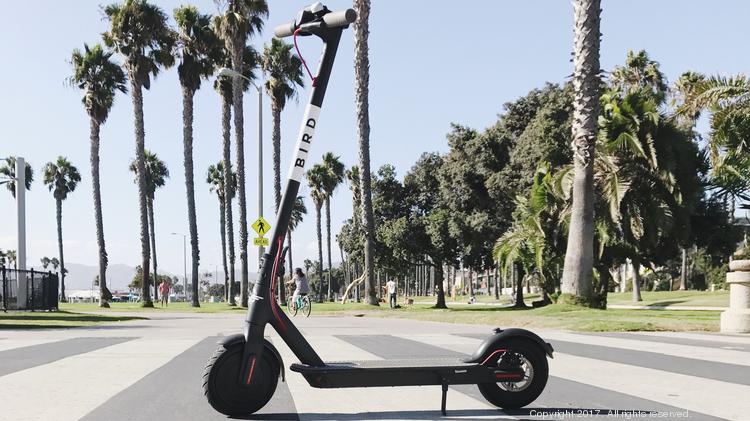As the globalization of all markets has lead to more and more people living in Los Angeles and other heavily populated cities, traveling throughout major metropolitan areas, and spending increased amounts of time focused on streamlining travel. As a direct result, mobility manufacturers have begun dedicating their energies toward servicing this new type of traveler, and many exciting mobility solutions have been borne from this undeniable need. Several companies have begun investigating the modern problems associated with outdated infrastructures, and have devoted energies to creating the physical space needed to propel modern travelers forward.

Below, we examine the ever-changing history responsible for the varying inventions in mobility. We delve into the socioeconomic factors related to changes in travel needs, cultural and societal changes, as well as technological advancements related to new mobility mediums. We take a look at a few forward-thinking companies who aim to change the way modern city dwellers travel and ways in which these innovations will impact society on a long-term basis. Sit back, enjoy, and feel free to move about the cabin (after all, it may be a private one soon).
Vehicle Ownership VS Rideshare
While naysayers of the Rideshare movement may have muttered that “a $5 trip here and there can add up quickly”, the average Rideshare user has enjoyed the financial benefits of shedding a personal vehicle on a long-term timeline. On an everyday basis, maintaining a vehicle may not inherently appear to be costly, except for those dreaded trips to the pump. In reality, however, vehicle leases or financing payments, insurance payments, potential parking passes and stickers, and routine oil changes contribute to payments of a few hundred dollars per month. When added to an emergency auto repair situation, that number can skyrocket at a moment’s notice. For the same price, one could take an Uber, or Lyft, just about every day.
Getting to and from major airports was historically a production that involved a lot of excessive cash, unreliable cabbies angling to take the scenic route, and loads of other unforeseen circumstances. On the other hand, parking a vehicle within the airport area most certainly involved being overcharged, and fearing for a vehicle’s safety throughout a multi-day trip. When the Rideshare system came along, traveling to and from major airports became a much more streamlined process, and almost immediately resolved these concerns. Those utilizing various Rideshare services were able to quickly receive transportation services, even after delayed flights, or waiting for their luggage for hours, without the hassle of having to book transportation ahead. They were able to travel without the burden of leaving a car in a dark lot, with the security of knowing that stable transportation was merely a few taps away. Major airports eventually saw the writing on the wall, and began adding special “pick-up zones” dedicated to Rideshare clients, enabling a safe, effective, and streamlined process for drivers, as well as passengers. Instead of fighting the changing of the times, and potential revenue loss from limited cab services associated with the airport, they embraced the quick-service nature of Ridesharing, and even added their own small fees built into pricing from these services. In a study conducted by the National Cooperative Highway Research Program, it was discovered that a large portion of Ridesharing activity took place on trips to and from airports, which further supports this notion of ease.
Within this study, it was also found that most trips taken occur within a “downtown” area, are, on average, no more than 5 miles in distance. These findings suggested that Ridesharing has become an effective means of saving time when taking shorter trips within a particular city. Time, truly the most luxurious commodity, has been at the forefront of decision making for shorter trips within one area, where a similarly priced trip on a city bus, or subway system, would take much more time, even if price was completely discounted. Another time saving bonus after one has arrived with mere moments to spare prior to a large work presentation? No need to aimlessly circle the block in search of the golden unicorn of parking-a conveniently located, legal, and cheap parking spot.
City Cycling and Bike Shares

Many years ago, cars whizzed by throughout the city streets without much consideration toward sharing said road with varying types of motorists. Though people always rode bicycles within larger cities, there has certainly been a large boom in the overall number of bikers within urban landscapes, as more and more professionals began to recognize the benefits of commuting via cycle. Throughout this changing landscape, cities have begun to create urban infrastructure based around supporting the cyclist commuter, including creating dedicated and safe bike lanes, and propagating safety laws for all parties sharing the road.
As modern millennials and young professionals began to come into their own, they began to take a health-conscious approach in regard to their own wellbeing. For many people living in cities, a 2 mile commute became a twice daily opportunity to be physically active, whilst still shaving time off of their commute by avoiding pesky intersections, stop lights, and vehicle traffic. In many cities, where traffic gridlock has continuously caused chronic lateness, biking has allowed commuters to save precious minutes, whilst enjoying the vast health benefits of biking. With many bikes equipped with cargo buckets, cyclists turned pesky errands into opportunities for spending extra time outdoors.
Not only did cities begin to create urban infrastructure to support this trend in transportation, but healthcare companies recognized the benefits of aiding in this trend. In Los Angeles, the public transportation system has implemented a Rideshare style bicycle vending system, aptly called Metro Bike Share. With over 120 stations, and a convenient kiosk payment system, riders can vend a bicycle to ride daily, or sign up for long-term memberships. With various pricing models, convenient locations, and other incentives from the insurance company, LA has jumped on the bandwagon of millennial mobility.
Scooter City: Bird And Lime
 In the same vein as bicycle sharing companies, but perhaps with a much cooler twist, electric scooter companies are now sprouting up with “scooter shares” throughout various cities. At the forefront of this trend, Bird and Lime scooters allow patrons to engage in a short-distance ride that saves time, money, and offers a little bit of fun along the way. Both companies offer several packages tailored toward students, young professionals, and city dwellers. Both companies are operated via free apps, which charge per use, and unlock scooters. Unlike their bicycle share counterparts, however, customers have the freedom to leave their scooters anywhere, without the need to take scooters to already existing stations. This allows for less commitment to particular routes, and even more time saving luxury.
In the same vein as bicycle sharing companies, but perhaps with a much cooler twist, electric scooter companies are now sprouting up with “scooter shares” throughout various cities. At the forefront of this trend, Bird and Lime scooters allow patrons to engage in a short-distance ride that saves time, money, and offers a little bit of fun along the way. Both companies offer several packages tailored toward students, young professionals, and city dwellers. Both companies are operated via free apps, which charge per use, and unlock scooters. Unlike their bicycle share counterparts, however, customers have the freedom to leave their scooters anywhere, without the need to take scooters to already existing stations. This allows for less commitment to particular routes, and even more time saving luxury.
Surf Air: Air Mobility
Modern mobility issues are not only restricted to the ground, but also have greatly impacted today’s air travel experience, and the subsequent need to search for solutions to the globalization of travel. With air travel available for not only the upper classes, “air traffic” is a truly concerning issue for many flyers on a deadline. With frequent business travelers sharing horror stories of being stuck in a three-hour delay on the tarmac, and the pre-flight process testing the patience of travelers destined for larger urban airports, it is no doubt that companies are looking for innovative ways to modernize air mobility.
For the modern traveler, successful mobility solutions need to come with the added luxury of time saved. With today’s traditional flight options, the notion of a seamless, concise, and time-saving experience is merely a falsity. In a private flight situation, a chartered jet still needs to be planned for ahead of time, and in a commercial setting, an entire day is usually spent between the various processes involved.
To service the frequent flyer looking for the most streamlined experience, the creators of Surf Air implemented a high-frequency flight schedule normally found in commercial airports and combined it with the ease of a private hangar. By flying into private airports located within major urban markets, Surf Air was inherently able to cut down on the hours spent within the milieu associated with commercial air travel, whilst still providing the convenience of flying into a major metropolitan area. By providing seamlessly linked car services, travel accommodations, and even hotel and hospitality recommendations, Surf Air aligned itself as being an enforcer of the prospect that time is the utmost luxury.
By shaving off hours from travelers’ itineraries typically spent engaged in stressful activities, Surf Air has provided people with a simple, convenient, and streamlined mobility solution. On average, Surf Air has concluded that their customers save roughly two hours per flight, which can be spent in much more productive ways. While that may not appear to be an astronomical amount of time, it certainly adds up for frequent flyers, equating to an entire work day for many.
Surf Air’s business model focuses on the importance of saving time, and the company’s focus on modern mobility strives for ongoing improvements within the realm of air travel. For example, from the beginning of the trip, customers arrive at private airports, directly entering a secure gate dedicated to their flight. From there, they are greeted by experienced concierges, merely fifteen minutes prior to flight time. With a ticketless entrance, customers avoid a lengthy check-in process and maintain the flexibility of arriving mere minutes prior to take off. In mere minutes, customers walk directly to their aircraft, whilst their commercial flying counterparts are left at various unorganized security pre-check stations. Upon landing, a concierge presents travelers with their respective belongings, ensuring the process of successfully leaving the aircraft upon landing takes less than ten minutes. While they have arrived at their destination, commercial travelers remain two hours behind.
By focusing on creating a modern mobility solution, Surf Air has set itself up for immense growth, and undoubtedly, for profound expansion within the upcoming years. As globalization of business calls for more frequent travel, increased numbers of individuals will continue to strive to avoid the “congestion” in the sky, much as they have done on the roads. Thus, Surf Air’s model will undoubtedly strive throughout international metropolitan markets.
Follow Surf Air on Twitter and LinkedIn.
According to Kapsch TrafficCom USA, “by the year 2050, it is expected that nearly 70% of the world population will live in cities.” With such staggering populations within urban environments on a global scale, it is safe to suspect that modern mobility solutions will have to be implemented in order to propel humanity forward. Without sufficient infrastructure throughout the roads, the air, and the underground, human activity will cease to exist in a streamlined, and successful manner.
While other parts of the world, including China, have enacted various laws that generally limit travelers (allowing individuals to only drive on certain days per week based on license plate numbers), companies and governments within the US are focused more on developing new technology, and building city infrastructures that will allow modern travelers to revel in streamlined experiences. They are working tirelessly to achieve these goals in creative manners that allow for the inclusion of new and profound methods of travel, rather than focusing on dissuading mobility or limiting people.
Within this changing ecosystem of modern mobility needs, companies are sprouting up, whose main mission is to assess the functionality of many cities, provide support and assistance to cities in need of increased mobility systems, and to spread insights regarding the future of urban mobility. Deloitte’s comprehensive City Mobility Index, for example, prepares a comprehensive report about various aspects of urban transportation systems within a city, infrastructure strengths and weaknesses, and ways in which each city’s unique composition can be vastly improved upon in the upcoming future. Considering things like congestion, public transportation reliability, and shared mobility, the Index provides an in-depth analysis, and comparative tool, that provides metrics for various environments. To stay relevant in the changing ecosystem of mobility urges Deloitte, manufacturers should reconsider ways in which they can remain meaningful, contributory, and positive within the changing urban mobility landscape.
What do all of these trends, global changes, and new technologies mean for the average millennial urban traveler? As current trends undoubtedly showcase, today’s young professionals, even those who own vehicles, are supplementing their usage of personal vehicles with several Ridesharing platforms. Additionally, increased numbers of people are choosing to forgo automobile ownership altogether, relying solely on their city’s infrastructures, as well as Ridesharing platforms, along with other means of transportation. For the cyclists, the increased open-mindedness means more dedicated bike lanes, and safety measures set up by cities. Finally, for the frequent flyers, the need for modern mobility means potentially brand new ways of looking at private air travel, bridging the gap between commercial and private flight.
All of the companies mentioned previously are continuously at the forefront of engaging customers with modern solutions to modern mobility needs. With their innovative measures, and the support of the general public, as well as government enforcement, there are real changes that are taking place in the manner in which people commute, travel, and go from point A to point B. By taking a closer look at the unfortunate consequences of overcrowding, and outdated infrastructures for all types of travel, several companies are recognizing the potential for growth, change, and real improvements to these new challenges. By propelling forward, they are creating the much-needed space to allow each member of society to thrive, to co-exist, and very importantly, to save time doing so. With rapid advancement within these categories, the future is exciting for the modern traveler.





